Part 15: December 14 Broadcast

You are listening to BBC radio 4. In an hour, we’ll be looking into the history of December feasting including the recipes and food. For the next hour, Professor David Stephenson will be presenting a documentary on the second 80 years war of the eighteenth century. This series will be running every third day, up to 50 episodes. If you want news of the current war in the Middle East please channel in to BBC radio 1.
 Good evening, and welcome to BBC radio 4. I’m Professor David Stephenson, professor of Dutch historical studies at Cambridge. This is the fifteenth part of our 50 episode special on the second 80 years war over Europe. Joining me for these broadcasts are fellow researchers and scholars Doctor Albert Andrews, specialist in German studies from the Berlin academy, Professor Robert Lowe, specialist in French studies at Cambridge, and a graduate student and technical assistant, Anton Thatcher. Last week, we reviewed what made the Dutch economy so grand.
Good evening, and welcome to BBC radio 4. I’m Professor David Stephenson, professor of Dutch historical studies at Cambridge. This is the fifteenth part of our 50 episode special on the second 80 years war over Europe. Joining me for these broadcasts are fellow researchers and scholars Doctor Albert Andrews, specialist in German studies from the Berlin academy, Professor Robert Lowe, specialist in French studies at Cambridge, and a graduate student and technical assistant, Anton Thatcher. Last week, we reviewed what made the Dutch economy so grand. And this economy was being slowly expanded from 1726 to 1730. Greatly negligent to their factories in many of their minor nations and recent conquests, the Dutch had to begin spending on the nations within the Western Atlantic Federation to keep them in line. Amsterdam itself didn’t see any improvements to their own economy until 1740, with money flowing into French, Spanish, Milanese and German businesses. Amsterdam still stayed ahead of Paris, Madrid and Munich through the power of its international stock exchange, which profited on speculation and investment in those same French, German and Spanish businesses.
And this economy was being slowly expanded from 1726 to 1730. Greatly negligent to their factories in many of their minor nations and recent conquests, the Dutch had to begin spending on the nations within the Western Atlantic Federation to keep them in line. Amsterdam itself didn’t see any improvements to their own economy until 1740, with money flowing into French, Spanish, Milanese and German businesses. Amsterdam still stayed ahead of Paris, Madrid and Munich through the power of its international stock exchange, which profited on speculation and investment in those same French, German and Spanish businesses.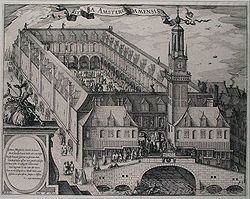
The Amsterdam Stock Exchange became an international stock exchange that traded on companies across the Western Atlantic Federation, North and South America, Africa, India and Asia.
 New wineries with improved irrigation were invented by the French to avoid crop rotation and Dutch agricultural reforms in the regions of Bordeaux and Loire, which vastly improved productivity at a very low cost. These reforms were so popular that they were also used in Spain and Germany, but the total investment cost the government six million guilders. Factories in Germany, Milan and India were expanded, costing twenty million guilders. With the loss of their spice trade from the East Indies after the British chased out the Dutch trade fleets, the Dutch had to spend another eight million on expanding the India and American spice plantations.
New wineries with improved irrigation were invented by the French to avoid crop rotation and Dutch agricultural reforms in the regions of Bordeaux and Loire, which vastly improved productivity at a very low cost. These reforms were so popular that they were also used in Spain and Germany, but the total investment cost the government six million guilders. Factories in Germany, Milan and India were expanded, costing twenty million guilders. With the loss of their spice trade from the East Indies after the British chased out the Dutch trade fleets, the Dutch had to spend another eight million on expanding the India and American spice plantations.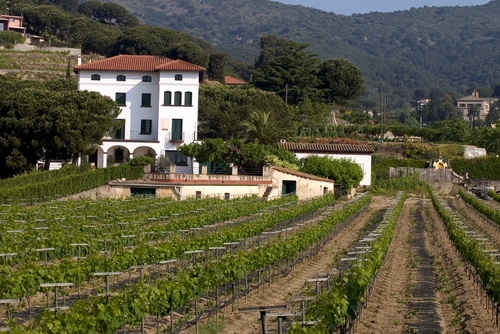
Spanish wineries were reformed following the French agricultural reforms rather than Dutch ones.
 And through all those expenses, the Dutch still had to rely on their tremendously expensive army to defend their borders which were being assailed from all sides. The Dutch in Munich were accosted by the Austrians, who had promised to liberate the former portions of the Holy Roman Empire, constant raids in India and by the British in Morocco.
And through all those expenses, the Dutch still had to rely on their tremendously expensive army to defend their borders which were being assailed from all sides. The Dutch in Munich were accosted by the Austrians, who had promised to liberate the former portions of the Holy Roman Empire, constant raids in India and by the British in Morocco.
The Austrian army trying to raid the Dutch.
 The Dutch in many cases had to sally forth from their fortifications to capture and destroy armies that intended to burn down the economic cornerstones of the Dutch Empire. This meant the fortified cities were of little strategic value to the Dutch as they were never attacked, and their assailants didn’t intend to engage the Dutch directly anyway.
The Dutch in many cases had to sally forth from their fortifications to capture and destroy armies that intended to burn down the economic cornerstones of the Dutch Empire. This meant the fortified cities were of little strategic value to the Dutch as they were never attacked, and their assailants didn’t intend to engage the Dutch directly anyway.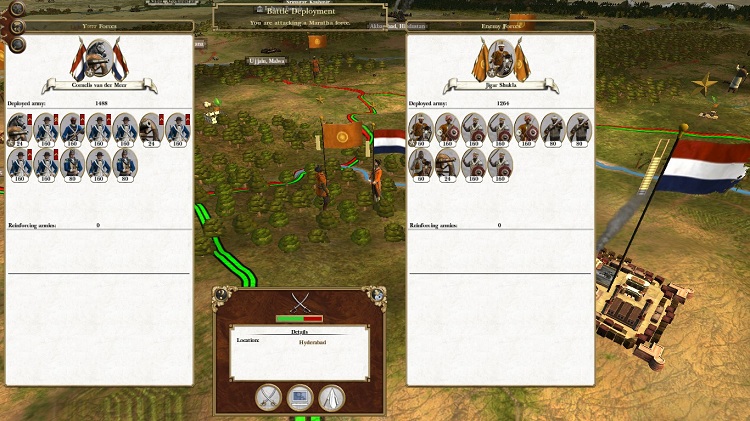
The Dutch sally forth to repel a raiding army of Marathas.
 In Munich, two raiding armies of the Austrian Empire had gathered north of the Danube river, hoping to get south, destroy Dutch factories and then regroup around Vienna. The Dutch however, had no intention of hoping the Austrians would move to attack Munich directly. Instead, the Elite army moved east to cross the Danube and cut off their potential path of retreat and the garrison under Ouwerkerk moved directly north to a direct crossing.
In Munich, two raiding armies of the Austrian Empire had gathered north of the Danube river, hoping to get south, destroy Dutch factories and then regroup around Vienna. The Dutch however, had no intention of hoping the Austrians would move to attack Munich directly. Instead, the Elite army moved east to cross the Danube and cut off their potential path of retreat and the garrison under Ouwerkerk moved directly north to a direct crossing.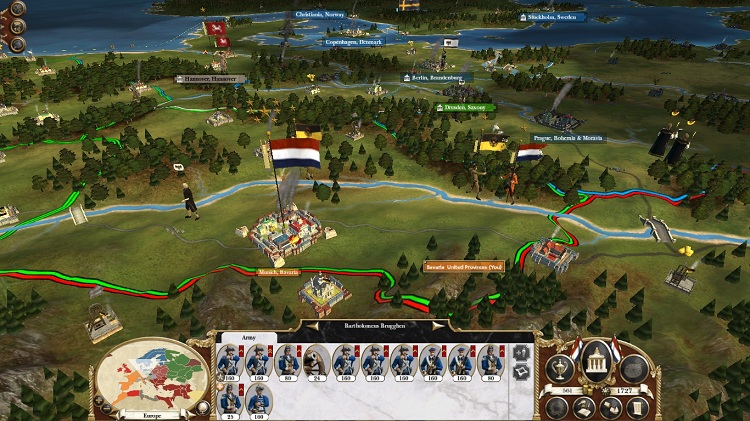
The Dutch eastern army cuts off the Austrians north of the Danube river.
 The eastern army made it to the Austrians first, catching the larger Austrian force from behind. The Dutch elite army contained the Scottish regiments, Swiss infantry and grenadiers, as well as a large number of line infantry. With no cavalry, they instead had howitzers to act as a counter battery to the long range Pandour infantry and foot artillery.
The eastern army made it to the Austrians first, catching the larger Austrian force from behind. The Dutch elite army contained the Scottish regiments, Swiss infantry and grenadiers, as well as a large number of line infantry. With no cavalry, they instead had howitzers to act as a counter battery to the long range Pandour infantry and foot artillery. The Austrians were relying on rifle armed peasants to back up their relatively low quality line infantry, but this particular set up meant they were incapable of winning a head on engagement. The Dutch, holding their artillery behind a hill to fire indirectly were using carcass shot to destroy the main line of the Austrian infantry, while the Austrian cannons were a very poor counter at range against the Dutch infantry, prompting an Austrian advance.
The Austrians were relying on rifle armed peasants to back up their relatively low quality line infantry, but this particular set up meant they were incapable of winning a head on engagement. The Dutch, holding their artillery behind a hill to fire indirectly were using carcass shot to destroy the main line of the Austrian infantry, while the Austrian cannons were a very poor counter at range against the Dutch infantry, prompting an Austrian advance.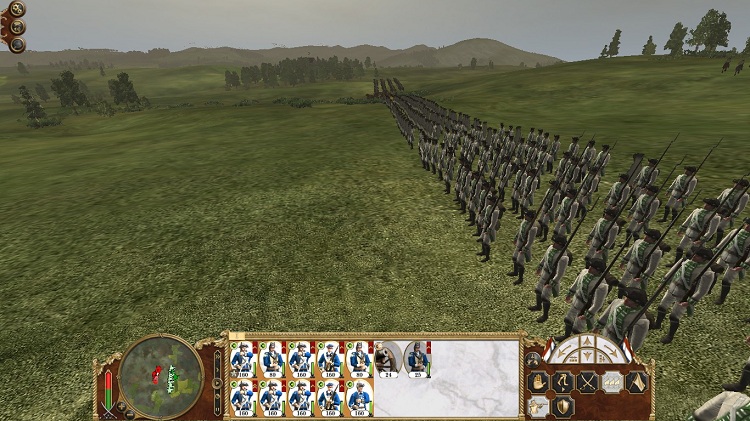
The Austrians advance on the Dutch.
 The Dutch, outgunned in essence against the Austrian Pandours and line infantry had opted for a few volleys followed by a melee charge. The Scottish infantry demolished the Austrian line where they charged them, and the grenadiers managed to run down the majority of their Pandours in vicious melee fighting.
The Dutch, outgunned in essence against the Austrian Pandours and line infantry had opted for a few volleys followed by a melee charge. The Scottish infantry demolished the Austrian line where they charged them, and the grenadiers managed to run down the majority of their Pandours in vicious melee fighting. While the battle had resulted in some minor losses, the Dutch had essentially destroyed the Austrian force of over a thousand men. The attack was short, fierce and brutal, entirely unlike the majority of warfare the Europeans had taken to, taking full advantage of the poor quality of the Austrian infantry, especially when charged by the vicious Scots.
While the battle had resulted in some minor losses, the Dutch had essentially destroyed the Austrian force of over a thousand men. The attack was short, fierce and brutal, entirely unlike the majority of warfare the Europeans had taken to, taking full advantage of the poor quality of the Austrian infantry, especially when charged by the vicious Scots.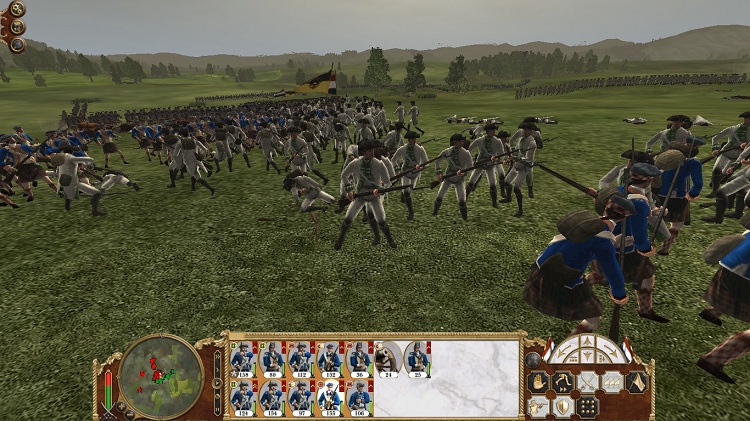
Scottish infantry were excellent shock troops. Kilt wearing infantry smashed through the Austrian line infantry quickly.
 Ouwerkerk’s army was similarly decisive in action against the Austrian’s smaller army further west. Crossing the Danube, the Dutch set up their army behind a screening hill, and slowly advanced towards it. Carbine armed cavalry attempted to skirmish with the Dutch infantry and charged up the hill, but found it to be ranged in by both the Dutch infantry and demicannons. Taking enormous casualties, they were quickly pushed back, letting the Dutch advance up the hill with their foot cannons.
Ouwerkerk’s army was similarly decisive in action against the Austrian’s smaller army further west. Crossing the Danube, the Dutch set up their army behind a screening hill, and slowly advanced towards it. Carbine armed cavalry attempted to skirmish with the Dutch infantry and charged up the hill, but found it to be ranged in by both the Dutch infantry and demicannons. Taking enormous casualties, they were quickly pushed back, letting the Dutch advance up the hill with their foot cannons.
Dutch infantry stop the carbine cavalry from skirmishing with them, firing as they crested the hill.
 Once in position on the hill, Ouwerkerk’s forces managed to rain cannon shot down on the majority of the Austrian infantry, forcing the Austrians to advance into range of the Dutch forces on top of the hill. While the Austrians were able to use their Pandours to fire from beyond the range of the Dutch infantry, the Dutch had wanted them to attempt to close up the hill, granting them a powerful downhill charge.
Once in position on the hill, Ouwerkerk’s forces managed to rain cannon shot down on the majority of the Austrian infantry, forcing the Austrians to advance into range of the Dutch forces on top of the hill. While the Austrians were able to use their Pandours to fire from beyond the range of the Dutch infantry, the Dutch had wanted them to attempt to close up the hill, granting them a powerful downhill charge.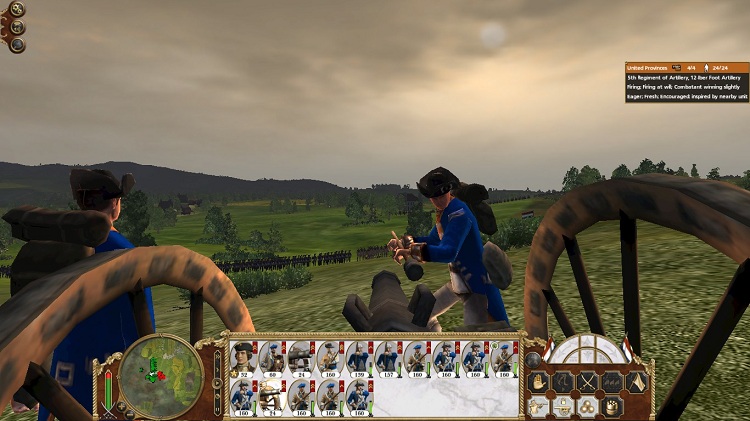
Dutch cannons had a good vantage point against the Austrian lines forcing them to advance.
 The Pandours on either flank were charged by Ouwerkerk’s infantry and cavalry, while their line infantry centre was hit by considerable musket fire from the very experienced Dutch militia. This again, was an easy victory for the Dutch.
The Pandours on either flank were charged by Ouwerkerk’s infantry and cavalry, while their line infantry centre was hit by considerable musket fire from the very experienced Dutch militia. This again, was an easy victory for the Dutch.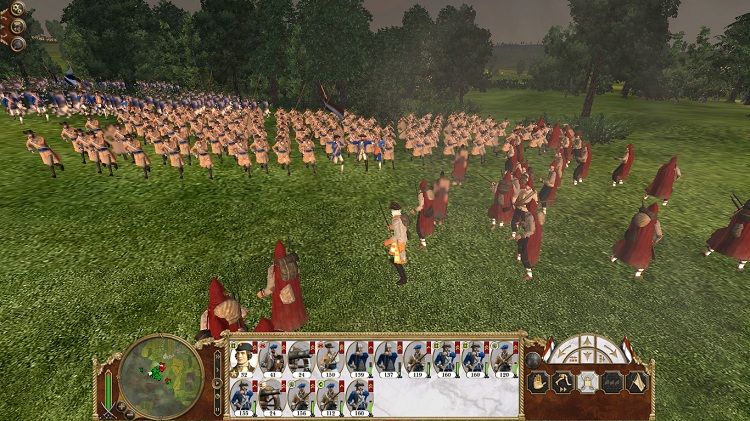
The dutch downhill charge wipes out the light Austrian skirmishers.
 In Morocco, the situation was a little different. While Tangiers was still in a state simmering on the edge of rebellion, the British forces in North Africa represented their entire force on the continent, meaning if the Dutch could push the British away from Tangiers, they would have an inordinate advantage over the British in Africa. Losing that force would mean the British could barely reinforce their army in the region, handing the theater over to the Dutch.
In Morocco, the situation was a little different. While Tangiers was still in a state simmering on the edge of rebellion, the British forces in North Africa represented their entire force on the continent, meaning if the Dutch could push the British away from Tangiers, they would have an inordinate advantage over the British in Africa. Losing that force would mean the British could barely reinforce their army in the region, handing the theater over to the Dutch.
The Dutch in North Africa didn't want to let the opportunity of dominating the region with their vastly superior military, and so moved to crush the British army under John Churchill.
 Dutch forces in Tangiers were vastly more numerous than the British, and the British had been so desperate as to employ local women to fight for them. While of poor discipline, these North African women had a long history as powerful warriors and they fought very effectively using irregular tactics and rifles. The vicious nature of these warrior women would greatly impress the Dutch, who four years after, ratified their army recruitment standards to allow women into the militia, and in twenty years, the officer corps.
Dutch forces in Tangiers were vastly more numerous than the British, and the British had been so desperate as to employ local women to fight for them. While of poor discipline, these North African women had a long history as powerful warriors and they fought very effectively using irregular tactics and rifles. The vicious nature of these warrior women would greatly impress the Dutch, who four years after, ratified their army recruitment standards to allow women into the militia, and in twenty years, the officer corps.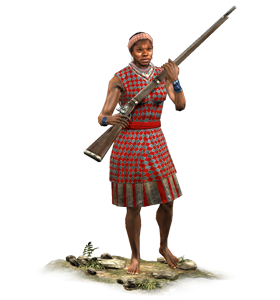
Dahomy Amazon warriors were local women from tribes that had allowed women to fight. Fighting from a distance with their rifles, they were far more fierce than the Dutch had given them credit for.
 In the battle of Tangiers, the British under John Churchill had moved to attack, but stalled when their scouts reported the Dutch numbers around the region. Instead, they faced a Dutch assault, being forced into battle a short distance from the city.
In the battle of Tangiers, the British under John Churchill had moved to attack, but stalled when their scouts reported the Dutch numbers around the region. Instead, they faced a Dutch assault, being forced into battle a short distance from the city. The British line infantry were scarce, numbering only a few battalions to the large Dutch infantry line, but they had more cavalry and more artillery. Dutch line infantry advanced rapidly, trying to get into range before they took too many casualties to the artillery when the British were forced to use their Yeomen cavalry to delay their advance, hoping the artillery would make up for the sacrifice.
The British line infantry were scarce, numbering only a few battalions to the large Dutch infantry line, but they had more cavalry and more artillery. Dutch line infantry advanced rapidly, trying to get into range before they took too many casualties to the artillery when the British were forced to use their Yeomen cavalry to delay their advance, hoping the artillery would make up for the sacrifice.
The British cannons were separated into three battaries which were hailing down deadly fire into the Dutch infantry.
 This worked to a degree. The British forces were able to hold up the Dutch line as they were forced into squares, and as the Yeomen hadn’t committed to charging them, they took fewer casualties than they would have in a sustained assault, but they were counter charged by the Dutch provincial cavalry. Under gun fire and far from their own supporting infantry, the Dutch cavalry and infantry squares were able to rout the British cavalry.
This worked to a degree. The British forces were able to hold up the Dutch line as they were forced into squares, and as the Yeomen hadn’t committed to charging them, they took fewer casualties than they would have in a sustained assault, but they were counter charged by the Dutch provincial cavalry. Under gun fire and far from their own supporting infantry, the Dutch cavalry and infantry squares were able to rout the British cavalry.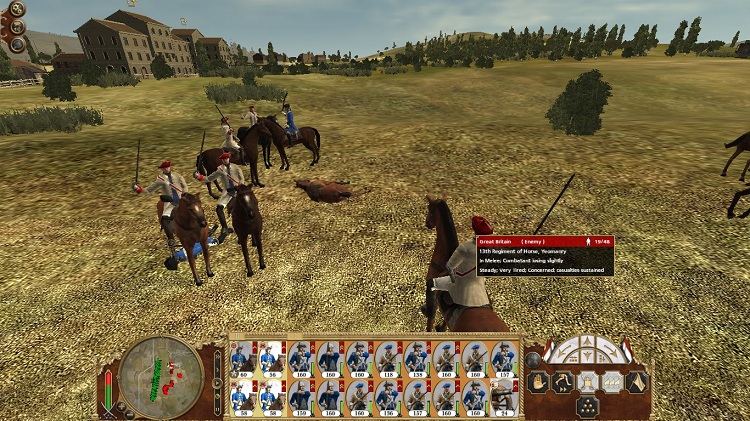
Dutch provincial cavalry catch the British Yeomen, forcing them back.
 This left the British artillery dangerously open to the Dutch with their infantry far to their left flank. A gap which was exploited immediately. The Dutch cavalry spiked two artillery battalions very quickly before a trap was sprung at the third.
This left the British artillery dangerously open to the Dutch with their infantry far to their left flank. A gap which was exploited immediately. The Dutch cavalry spiked two artillery battalions very quickly before a trap was sprung at the third.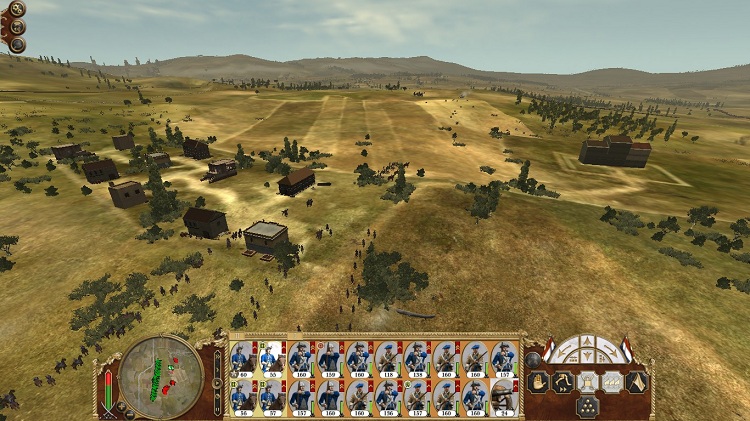
Dutch cavalry traveling in a horde streamed through the hills and homesteads to destroy the British demicannons.
 At the third and most central British artillery battery, the Dutch cavalry came into range of multiple battalions of warrior women hiding in the tall grass. Standing and firing, two squads of cavalry were routed, and the last, tired and startled were pushed back from melee by the vicious women.
At the third and most central British artillery battery, the Dutch cavalry came into range of multiple battalions of warrior women hiding in the tall grass. Standing and firing, two squads of cavalry were routed, and the last, tired and startled were pushed back from melee by the vicious women.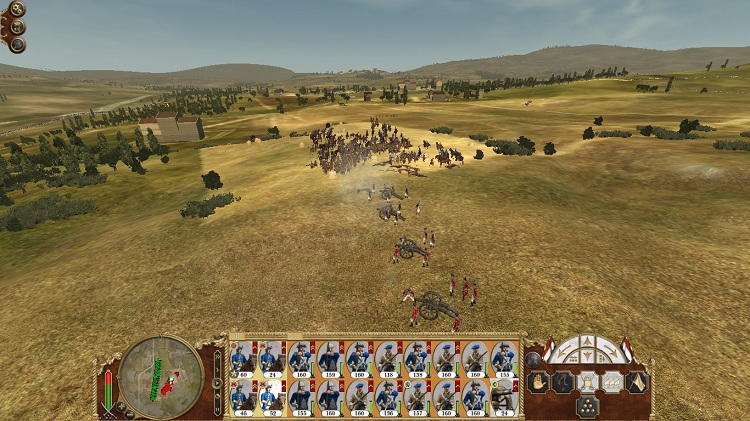
The Dutch cavalry are stopped just short of the last cannon battery.
 Without cavalry and with a British artillery battery in a commanding hilltop position, the Dutch infantry were forced to resume their advance as their own artillery struggled to get into an advantageous position. The Dutch, with such superior numbers were able to easily wrap around the British forces while pressing more infantry to surround and defeat the cannons and Amazons.
Without cavalry and with a British artillery battery in a commanding hilltop position, the Dutch infantry were forced to resume their advance as their own artillery struggled to get into an advantageous position. The Dutch, with such superior numbers were able to easily wrap around the British forces while pressing more infantry to surround and defeat the cannons and Amazons.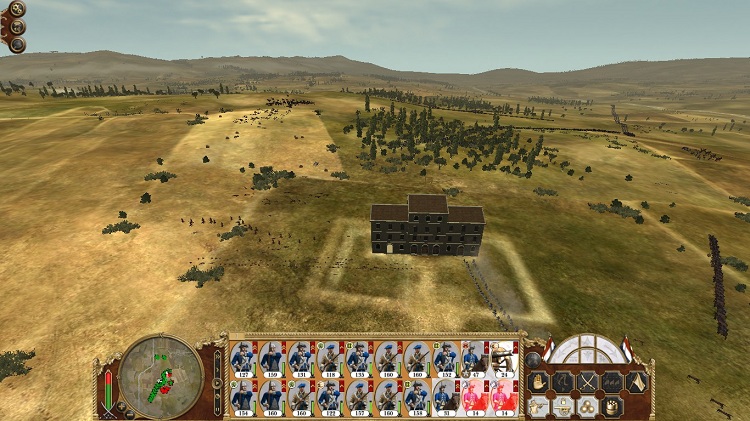
The Dutch Held back three battalions to beat back the Amazons while the rest of their army advanced. The numbers advantage was so severe that these missing men were not missed in the ensuing gun fight.
 Churchill prepared his remaining forces to engage in a desperate last stand, with their own pike regiment, just as old as the Dutch pike’s under Ouewerkerk in central Europe, and just as outdated, charged boldly into the Dutch lines, killing many militia before finally being run down.
Churchill prepared his remaining forces to engage in a desperate last stand, with their own pike regiment, just as old as the Dutch pike’s under Ouewerkerk in central Europe, and just as outdated, charged boldly into the Dutch lines, killing many militia before finally being run down.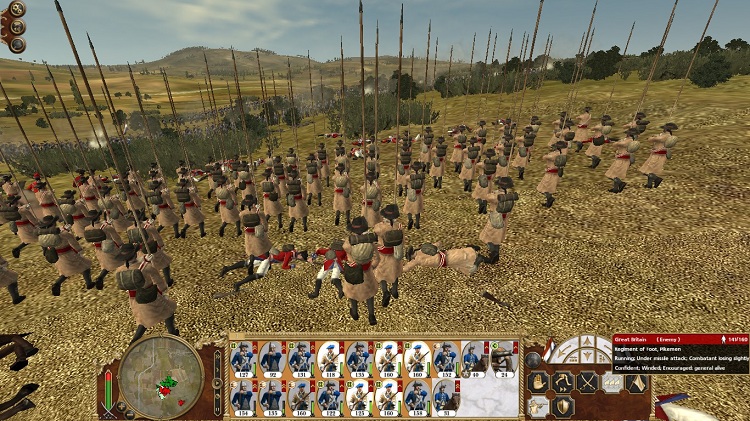
The British were one of the few nations with a surviving pike battalion by the 1720s. The Dutch were another.
 Churchill during this battle had fought bravely, charging into the Dutch conscripts, but was killed by a cannonball fired by the Dutch foot artillery that had finally made it to the top of the hill that the British cannons had once stood. Now under dominant artillery fire, their general dead and their forces surrounded on all sides, the few remaining British troops broke and fled.
Churchill during this battle had fought bravely, charging into the Dutch conscripts, but was killed by a cannonball fired by the Dutch foot artillery that had finally made it to the top of the hill that the British cannons had once stood. Now under dominant artillery fire, their general dead and their forces surrounded on all sides, the few remaining British troops broke and fled.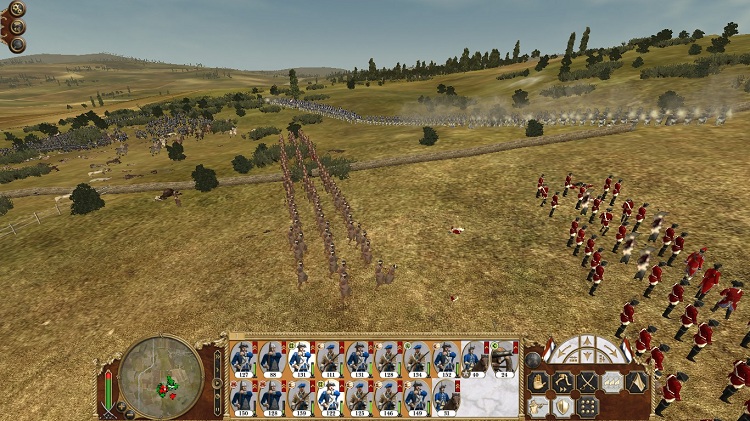
The British find themselves in a terrible situation with their right flank gone.
 The Dutch, who had outnumbered the British two thousand six hundred fifty to one thousand two hundred fifty had lost a startling number of men, and many of them were expensive provincial cavalry. While it would seem that seven hundred casualties to a thousand casualties were in the Dutch favour, normally an army so much larger could expect to get through defeating their less numerous foe for far fewer casualties. It had in some senses been a poor victory, though not Pyrrhic. With so many dead, the Dutch could not both police Tangiers and move East against the British.
The Dutch, who had outnumbered the British two thousand six hundred fifty to one thousand two hundred fifty had lost a startling number of men, and many of them were expensive provincial cavalry. While it would seem that seven hundred casualties to a thousand casualties were in the Dutch favour, normally an army so much larger could expect to get through defeating their less numerous foe for far fewer casualties. It had in some senses been a poor victory, though not Pyrrhic. With so many dead, the Dutch could not both police Tangiers and move East against the British.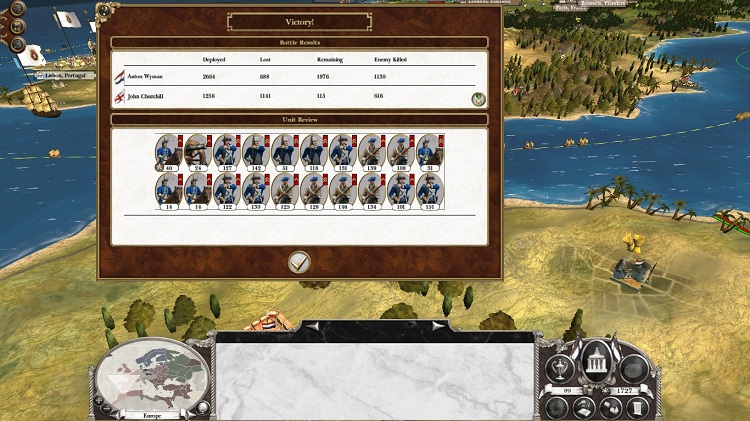
The British inflict heavy casualties considering the disadvantage they were at at the onset of the battle.
 In the East, the Dutch had continued to hold out against constant Maratha raids. Two more had occurred towards Hyderabad, and were repelled quite handily by Dutch forces. With Dutch and European influences driving a deep divide into the country, many Maratha nobles had raised up great armies of swordsmen, opting to return to their martial roots and culture to counteract increasing European influence from the general population. These fanatically brave swordsmen caused devastating casualties to the Dutch armies in the region, but the Dutch were already nearing preparation for their coming campaigns. The Dutch armies that were too battered to fight were rotated back for replenishment while fresh armies were put to the choke points the Dutch had opted to defend.
In the East, the Dutch had continued to hold out against constant Maratha raids. Two more had occurred towards Hyderabad, and were repelled quite handily by Dutch forces. With Dutch and European influences driving a deep divide into the country, many Maratha nobles had raised up great armies of swordsmen, opting to return to their martial roots and culture to counteract increasing European influence from the general population. These fanatically brave swordsmen caused devastating casualties to the Dutch armies in the region, but the Dutch were already nearing preparation for their coming campaigns. The Dutch armies that were too battered to fight were rotated back for replenishment while fresh armies were put to the choke points the Dutch had opted to defend.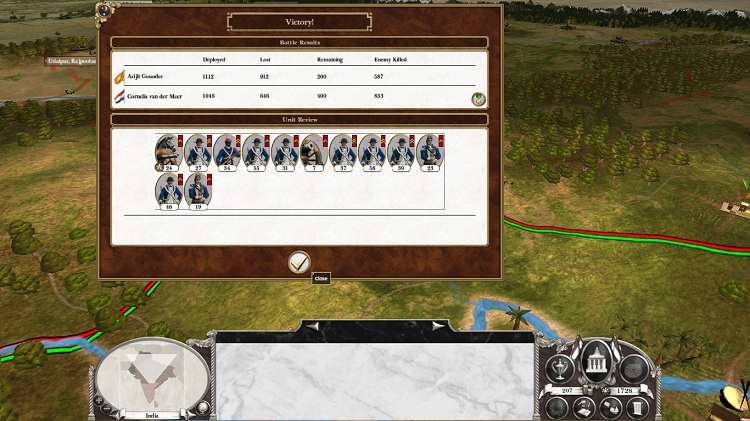
The Dutch were losing a tremendous number of men defending against the Marathas, but were now in a position that they could afford heavy losses.
 It was at sea that the Marathas had attempted to break the Dutch occupation. If they could defeat the Dutch navy in the region, they could blockade Dutch ports across India completely cutting most of the profits from the region, making it too expensive to maintain.
It was at sea that the Marathas had attempted to break the Dutch occupation. If they could defeat the Dutch navy in the region, they could blockade Dutch ports across India completely cutting most of the profits from the region, making it too expensive to maintain.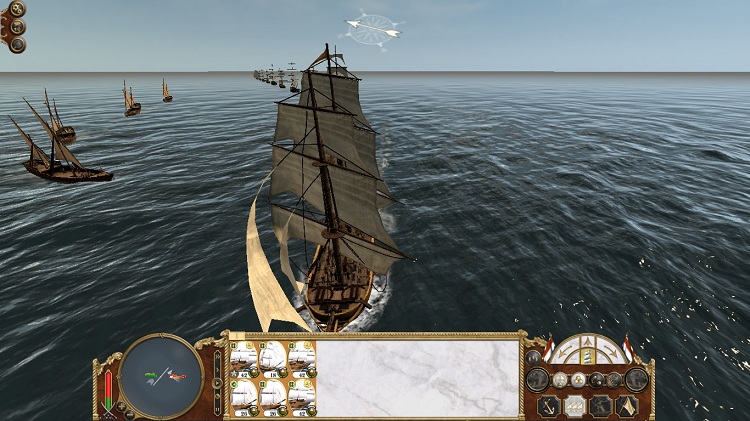
The Maratha navy was terribly weak compared to their European equals, but the V.O.C. had sent their best ships west to assist against Britain.
 In reality, this hope was false. The Dutch would be hurt economically certainly if the Marathas blockaded their trade, but they wouldn’t be in deficit. While the still abundant land armies conquered India, the Dutch would eventually have lifted the blockade with their European fleet of third rate ships and have resumed trading, but the Marathas, confined to India had no real knowledge of how strong the Dutch were in Europe.
In reality, this hope was false. The Dutch would be hurt economically certainly if the Marathas blockaded their trade, but they wouldn’t be in deficit. While the still abundant land armies conquered India, the Dutch would eventually have lifted the blockade with their European fleet of third rate ships and have resumed trading, but the Marathas, confined to India had no real knowledge of how strong the Dutch were in Europe. Regardless, the Marathas moved their entire navy consisting of Brigs, sloops and trade ships to attack the much smaller Dutch fleet of frigates, brigs and one sloop. Less than half as many ships, the Dutch had much more powerful vessels at their disposal. The Dutch had managed to give the Marathas a bit of a run around, trying to get their fleet to spread out a little before engaging. To prevent this from happening, the Marathan fleet circled into a loop to prevent the Dutch from crossing the T or engaging them from a bad angle, forcing the Dutch to move their ships around to attempt to surround the Indian ships.
Regardless, the Marathas moved their entire navy consisting of Brigs, sloops and trade ships to attack the much smaller Dutch fleet of frigates, brigs and one sloop. Less than half as many ships, the Dutch had much more powerful vessels at their disposal. The Dutch had managed to give the Marathas a bit of a run around, trying to get their fleet to spread out a little before engaging. To prevent this from happening, the Marathan fleet circled into a loop to prevent the Dutch from crossing the T or engaging them from a bad angle, forcing the Dutch to move their ships around to attempt to surround the Indian ships.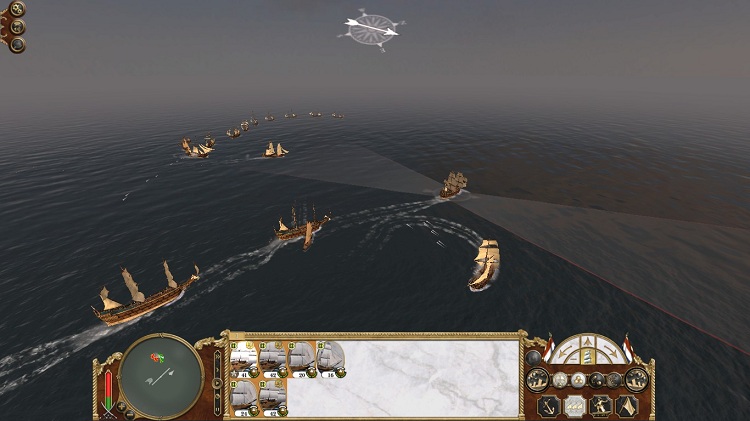
The Dutch are forced to engage the Maratha fleet essentially broadside to broadside as they close with the caracole of ships.
 The first three ships of the Dutch fleet, their heavier 5th rate ships of the line were able to inflict tremendous losses to the Indian fleet, destroying several guns and causing significant structural damage. Their brigs and sloop faired far less well, losing many guns in the exchange, with both brigs being put out of action fairly shortly after.
The first three ships of the Dutch fleet, their heavier 5th rate ships of the line were able to inflict tremendous losses to the Indian fleet, destroying several guns and causing significant structural damage. Their brigs and sloop faired far less well, losing many guns in the exchange, with both brigs being put out of action fairly shortly after.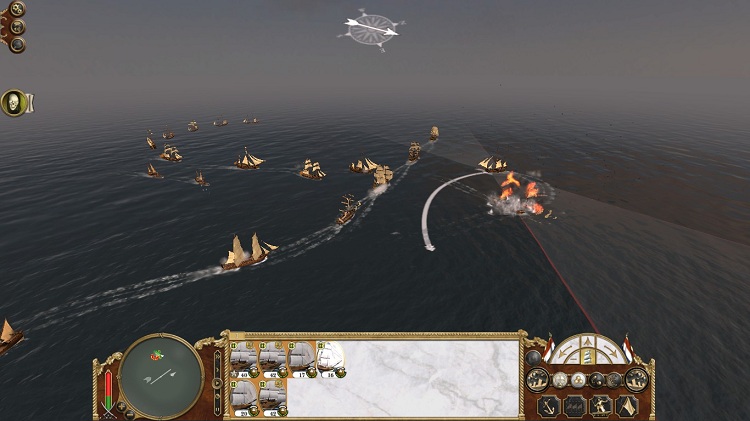
A Maratha brig explodes as the Dutch pass by.
 By the second pass, the Dutch fleet had lost all of their supporting vessels, with a brig sinking and their sloop catching fire. One the other hand, a pair of Maratha brigs were forced to strike their colours, and another two actually had their powder ignite and exploded quite spectacularly.
By the second pass, the Dutch fleet had lost all of their supporting vessels, with a brig sinking and their sloop catching fire. One the other hand, a pair of Maratha brigs were forced to strike their colours, and another two actually had their powder ignite and exploded quite spectacularly.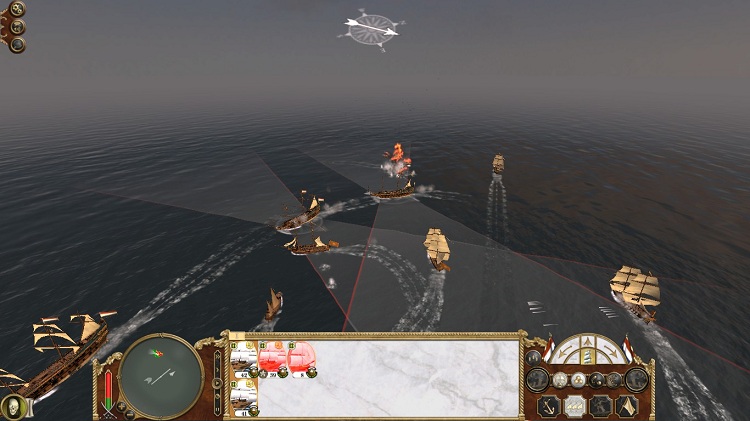
A second brig explodes as the Dutch near the end of their first pass.
 The Dutch frigates moved around for a second pass, firing terrifying volleys into the Maratha fleet, forcing more and more ships out of action. The point blank cannon fire was devastating the Indian ships, but the pounding the frigates received in return were taking their toll. Worse yet, their lead ship, the Admiraal de Ruijer blew apart another Brig on that pass from a literal stones throw away and caught fire in the blast. The crew, panicking started to flee the battle. While the ship’s crew would put the fires out as they fled, the Admiraal de Ruijer would not be able to assist in the remainder of the battle.
The Dutch frigates moved around for a second pass, firing terrifying volleys into the Maratha fleet, forcing more and more ships out of action. The point blank cannon fire was devastating the Indian ships, but the pounding the frigates received in return were taking their toll. Worse yet, their lead ship, the Admiraal de Ruijer blew apart another Brig on that pass from a literal stones throw away and caught fire in the blast. The crew, panicking started to flee the battle. While the ship’s crew would put the fires out as they fled, the Admiraal de Ruijer would not be able to assist in the remainder of the battle.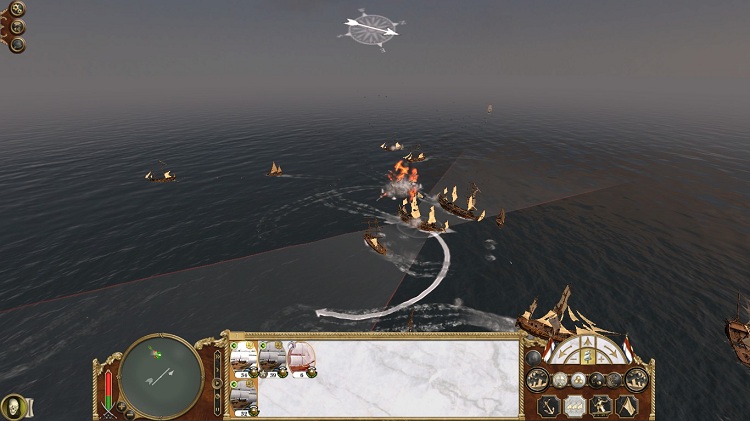
The Admiraal de Ruijer is ignited by an exploding brig as it moves into the second pass. By now, cohesion had broken down some and it was more a general brawl than an ordered pass.
 The remaining frigates managed to keep their morale together and continued firing upon the few remaining ships, capturing four unarmed Dhow trade ships. By the time the smoke cleared, the battle had been won by a hair’s breadth, with two Dutch ships sunk, their lead ship disorganized, and their two remaining frigates held together by scraps, the battle had been a very near win.
The remaining frigates managed to keep their morale together and continued firing upon the few remaining ships, capturing four unarmed Dhow trade ships. By the time the smoke cleared, the battle had been won by a hair’s breadth, with two Dutch ships sunk, their lead ship disorganized, and their two remaining frigates held together by scraps, the battle had been a very near win.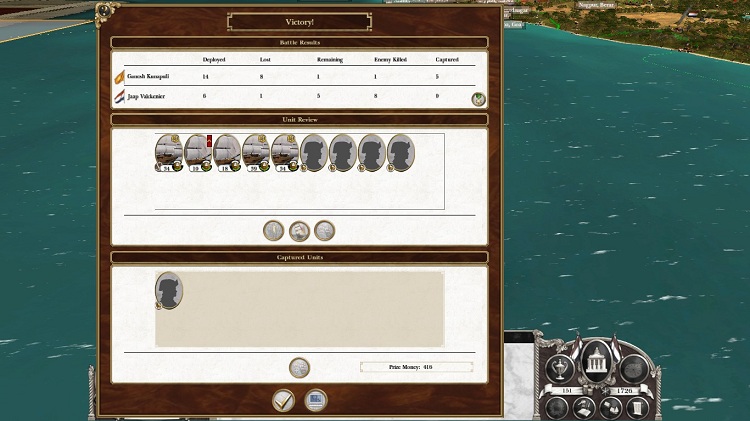
The Dutch captured had a largely intact fleet when all was said and done. The victorious fleet could often go ashore for repairs while the loser had to either surrender or scuttle their ships.
 With dominance at sea in the Indian theater, the Dutch were free to send their trade ships and captured dhow to the East Indies hoping the British fleet had evacuated.
With dominance at sea in the Indian theater, the Dutch were free to send their trade ships and captured dhow to the East Indies hoping the British fleet had evacuated. Next we will be presenting the history of feasts in December, as well as holiday recipes across the ages. This program will be extended past the normal scheduled half hour for another full hour. World news has been moved back an hour for today and for the rest of the Christmas season. If you want news of the current war in the Middle East please channel in to BBC radio 1. David Stephenson will be presenting more on the 80 years war in 3 days.
Next we will be presenting the history of feasts in December, as well as holiday recipes across the ages. This program will be extended past the normal scheduled half hour for another full hour. World news has been moved back an hour for today and for the rest of the Christmas season. If you want news of the current war in the Middle East please channel in to BBC radio 1. David Stephenson will be presenting more on the 80 years war in 3 days.